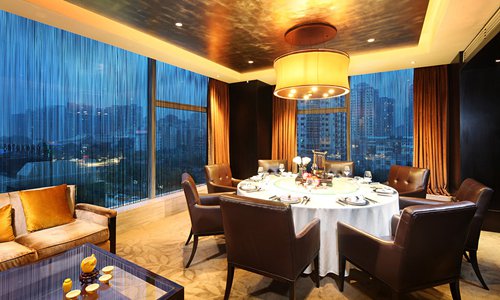Occupancy rate achieves 60% in China
By Yin Yeping Source: Global Times Published: 2020/8/11 16:48:40
Foreign-invested hotel groups recover at steady pace in the post-epidemic era

The Sui Yuan Chinese Restaurant Photo: Courtesy of the DoubleTree by Hilton Beijing
The successful containment of the epidemic and the resumption of business is bearing fruit in China's international hospitality industry. Foreign-invested hotels in China are now experiencing a rebound, with the average occupancy rate nationwide reaching 60 percent, and those based in southern China achieving up to 80 percent occupancy, industry insiders said.
The rebound comes just one month after a notice released by the Ministry of Culture and Tourism on July 14 gave local governments permission to resume travel agency, online tourism and trans-provincial travel business, as well as giving a green light to the hospitality business.
A source within a foreign-invested international hotel in South China's Guangdong Province told the Global Times on condition of anonymity that the occupancy rate of the hotel he worked at rose by 70-75 percent, with some hotels in the region achieving even higher.
"The international hotel industry in China is currently domestic driven, and will remain like this for a while since borders are still closed," the source said.
The hospitality industry's rebound has come about thanks to the resumption of business nationwide, and increased consumption in the post-epidemic era, analysts said.
In a written interview with the Global Times on Monday, Qian Jin, area president for Hilton Greater China and Mongolia, said that, globally speaking, business in the greater China region has been the first to recover.
All 250 of Hilton's hotels in the mainland resumed business by May 8, and it has been spring and summer weekends, in addition to several small holidays, that have combined to bring a peak in occupancy levels.
"Hotels around big cities suitable for weekend and family trips are often full. Summer's parent-child tours and other family trips have further pushed up the occupancy rate, and some hotels have even been full for more than a week," Qian said, noting that with the recovery of inter-provincial tourism in China and the arrival of the summer vacation, the parent-child family travel market expects a new wave of growth.
"Despite the COVID-19 outbreak, our business expansion has maintained a good momentum and has resumed full development as planned," said Qian.
Ding Zhigang, deputy secretary general of the China Hospitality Association, told the Global Times on Monday that the occupancy rate of the international five-star hotels has now reached 60 percent on average, and the percentage is expected to creep higher during holidays and weekends.
"The hotels in areas of southern China that saw less epidemic impact are enjoying a greater rebound," Ding said. "Similarly, hotels in cities that always had a stronger tourism industry are recovering sooner."
High-end foreign-invested international hotels in popular destinations such as Sanya, South China's Hainan Province, are seeing occupancy rates of around 80 percent or are even full, the Beijing Business Daily reported Sunday.
Uneven resumption
The situation appears slightly different to those in the north, where cities like Beijing saw comparatively low resumption in the international hospitality business.
Beijing lifted its ban for the first time on April 29, making it one of the last cities to ease restrictions in a bid to prevent the epidemic. Following this date, there were repeated small outbreaks in early June, undoubtedly having a negative effect on the hotel industry, analysts said.
A general manager with a Beijing-based, foreign invested international five-star hotel told the Global Times that his hotel picked up from a single digit occupancy rate at the peak of the outbreak, to around 30-40 percent today, which he said had already exceeded his expectations.
"All of our guests are domestic travelers from other cities and provinces, plus a few resident expats staying for business," he said.
However, as a high-end business and conference hotel, it is the 'Meetings, Incentives, Conferences and Events' (MICE) sector that was previously the main generator of profits for such a hotel, but which remains at a low level.
"Many large conferences and exhibitions in Beijing take a long time to plan, so it takes time to actually land, while small conferences are held online," the general manager said, adding that the catering business had recovered but not particularly well due to ongoing public concerns about dining out.
Given the current situation, Ding predicted that the domestic hospitality market should expect a downward trend once the summer holidays are over, and that it would take another half a year for the industry to fully recover.
Time for change
In the face of such uncertainty, many hotel groups are actively seeking to change by upgrading services in a bid to cope with their "new normal."
To meet the needs of conferences and activities in the post-epidemic era, Hilton has introduced Hilton EventReady with CleanStay, a cleaning service program developed for conferences and events that will greatly improve the safety of such meetings, according to Qian.
Meanwhile, Hilton has been developing other activities, such as adapting their menus for take-out and live broadcasts by hotel chefs, to establish closer interactions with consumers.
"With the changing of the segmentation, foreign hotels are changing their market strategies in China to lean more toward serving local guests," Ding said.
What's more, as the market in first-tier cities becomes saturated, foreign-invested hotel groups are likely to look toward expansion into second and third tier cities, where the demand for higher-quality services is on the rise.
Posted in: ECONOMY